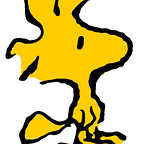The Vietnam War’s Atrocity Machine Explained: ‘Winter Soldier’
Winter Soldier is a documentary you don’t just watch, you experience. Over three days in January and February 1971, just a couple months before Lieutenant William Calley would be sentenced for the My Lai Massacre (he would eventually serve less than four years), a group of Vietnam War veterans convened at a Howard Johnson in Detroit. They were there to testify about the atrocities they had witnessed or partaken in while serving in Vietnam. The conference was titled “The Winter Soldier Investigation,” after Thomas Paine:
These are the times that try men’s souls: The summertime soldier and the sunshine patriot will in this crisis, shrink from the service of his country; but he that stands it now, deserves the love and thanks of man and woman.
Needless to say, the country didn’t thank the (mostly long-haired and disenchanted) vets for reminding them what a sinkhole of terror and shame America had created in Vietnam. The gut-wrenching, eye-opening stories delivered by hundreds of soldiers in that sterile hotel conference room were mostly ignored by the media. The testimony, however, happened to be shot by a group called the Winterfilm Collective (including the future Academy Award-winning documentarian Barbara Kopple). Edited into a tight, 95-minute piece of scorching truth-telling, Winter Soldier played around at some film festivals, colleges, and one small Manhattan cinema, before mostly disappearing from the scene.
It’s not hard to see why, given that the film is essentially a parade of grainy, black-and-white footage of morose, shaggy-headed vets talking in confession-booth tones about laying waste to villages and butchering civilians; this is not a fun night out at the movies (but, then, neither is Shoah). In general, we as a country have preferred to have our Vietnam horror stories served up to us as part of thrilling wartime adventure tales, like Apocalypse Now and Platoon, or used as nihilistic punch lines in the morbidly inhumane Full Metal Jacket. And yet it remains well-nigh unconscionable that Winter Soldier, a burningly crucial missive delivered straight from the frontline, never become one of the standard texts on the Vietnam War and didn’t receive its first proper theatrical release until 2005.
At the time of its re-release, in the heat of war-mongering denial over growing evidence of the Iraq War’s grim ignominy, Winter Soldier was used as a punching bag by the right, who tried to posthumously Swift Boat the soldiers’ claims. (This was at least partially due to then-Senator John Kerry being a member of this group; he testify on these same matters before the Senate Foreign Relations Committee just a few months later.) But it’s not the testimonies’ grisly substance which give the film its substantial power, it’s their numbing repetition, the same tropes repeated with such consistency that it paints a damning portrait of institutionalized American brutality.
Like with the Abu Ghraib scandal many decades later, the Winter Soldier testimony showed that an indifference to Geneva Conventions regarding prisoners of war had filtered from command down to the grunts charged with handling them. Several soldiers speak with quite jarring normality about prisoners being thrown blindfolded out of helicopters, by officers no less, while slides show GIs looking on as South Vietnamese regulars torture suspected Vietcong guerrillas. Almost worse, however (and here is where, so far at least, the Vietnam-Iraq parallels seem to lessen), is the absolute disregard for civilian life.
Anyone with even a little knowledge of the war knows the old joke (repeated here) about how to tell a Vietcong from a noncombatant (“Anybody running away is a VC. Anybody standing still is a well-disciplined VC.”) But it’s quite another thing to hear this deluge of horrors, with ordinary Vietnamese gunned down on the side of the road, from helicopters in rice paddies, in their villages, just because they happened to be in the way. Soldier after soldier talks about how routine these killings were, with everything sanctioned by their officers, who at best looked the other way and at worst instigated it. “They weren’t human” is heard over and over. The atrocities that occurred were the inevitable result of systematic racism combined with a war in which no ground could be gained or lost, and only the body count mattered — whether the bodies were actually combatants was an oft-ignored detail.
Decades on, Winter Soldier can seem an anachronism with its lack of framing devices and narration, the testimony just laid out there in stark relief, with the viewer mostly left to fend for themselves; a potential problem in these ahistorical times. As a film it runs into problems when trying to tie domestic racism against Native and African-Americans to the dehumanization of the Vietnamese people — it’s an important point that gets muffled, something that a clearer editorial approach could have helped.
However, the sheer weight of testimony and the numbing repetition of their similar elements shows for a lie the attempts by fringe pro-war elements to present these soldiers’ stories as fabricated or aberrations instead of the norm. You can dismiss some of what’s said here as lies and exaggerations, but to deny the whole of it is to simply close one’s eyes to reality.
War is hell. Winter Soldier vividly shows that this was true of the Vietnam War, only more so.
Title: Winter Soldier
Director: Winterfilm Collective
Studio: Milestone Films
Year of release: 1972
Web site: http://www.milestonefilms.com/products/winter-soldier
(A version of this review was originally published at filmcritic.com)
